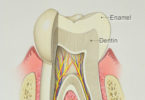Difference Between DNA and RNA
Summary: The main Difference Between DNA and RNA is the sugar present in the molecules. While the sugar present in a RNA molecule is ribose, the sugar present in a molecule of DNA is deoxyribose. Deoxyribose is the same as ribose, except that the former has one more OH.

DNA
1.Found in nucleus
2. sugar is deoxyribose
3. Bases are A,T,C,G
4. Bases & Sugars: DNA is a long polymer with a deoxyribose and phosphate backbone and four different bases: adenine, guanine, cytosine and thymine.
5. Definition: A nucleic acid that contains the genetic instructions used in the development and functioning of all known living organisms.
6. Job/Role: Medium of long-term storage and transmission of genetic information.
7. Stands for: Deoxyribo Nucleic Acid.
8. Predominant Structure: Typically a double- stranded molecule with a long chain of nucleotides.
9. Stability: Deoxyribose sugar in DNA is less reactive because of C-H bonds. Stable in alkaline conditions. DNA has smaller grooves where the damaging enzyme can attach which makes it harder for the enzyme to attack DNA.
10. Unique Features: The helix geometry of DNA is of B Form. DNA is completely protected by the body i.e. the body destroys enzymes that cleave DNA. DNA can be damaged by exposure to Ultraviolet rays.
RNA
1.Found in nucleus and cytoplasm
2.sugar is ribose.
3. Bases are A,U,C,G
4. Bases & Sugars: RNA is a polymer with a ribose and phosphate backbone and four different bases: adenine, guanine, cytosine, and uracil.
5. Definition: RNA, single-stranded chain of alternating phosphate and ribose units with the bases adenine, guanine, cytosine, and uracil bonded to the ribose. RNA molecules are involved in protein synthesis and sometimes in the transmission of genetic information.
6. Job/Role: The main job of RNA is to transfer the genetic code need for the creation of proteins from the nucleus to the ribosome. this process prevents the DNA from having to leave the nucleus, so it stays safe. Without RNA, proteins could never be made.
7. Stands for: RiboNucleic Acid
8. Predominant Structure: A single-stranded molecule in most of its biological roles and has a shorter chain of nucleotides.
9. Stability: Ribose sugar is more reactive because of C-OH (hydroxyl) bonds. Not stable in alkaline conditions. RNA on the other hand has larger grooves which makes it easier to be attacked by enzymes.
10. Unique Features: The helix geometry of RNA is of A-Form. RNA strands are continually made, broken down and reused. RNA is more resistant to damage by Ultra-violet rays.







Leave a Comment
You must be logged in to post a comment.